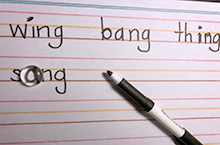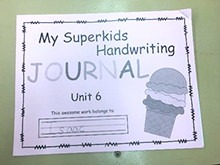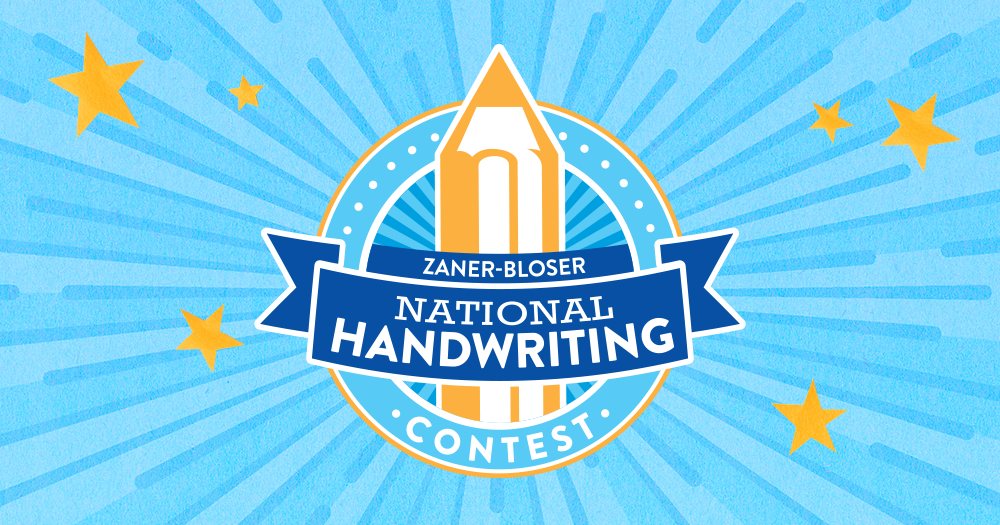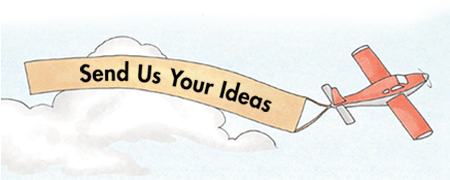|
|
|
|
ISSUE 26 | JAN. 2022
|
|

|
|
|
|
|
|
Routines are essential in any K–2 classroom. Routines can provide structure and a logical sequence to the school day. Routines enable teachers and students opportunities to prioritize, get important things done, and improve on specific tasks. This issue will focus on the methods, purpose, and importance of the Superkids Daily Routines. Psst. Be sure to check out the highly requested freebie.
|
|
|

|
|
|
|
|
|
When we ask experienced Superkids teachers what advice they would give to new teachers of the program, they often say, “Don’t skip the Daily Routines!” They report that this unique feature of the Superkids program makes a big difference in their students’ achievement. Daily Routines are quick activities that provide skill practice for students and give you a superb opportunity to assess children’s skills each day. Let’s explore the components of the Daily Routines, why each routine is important, and best practices to consider while teaching them.
-
Phonemic awareness is the strongest predictor of beginning reading success. Phonemic awareness, along with letter knowledge, unlocks the key to the alphabetic principle.
It’s important that you model the correct articulation of discrete phonemes and have students correctly articulate phonemes as well. This is not easy to do! When you see a symbol such as /k/ for the hard sound of c in the Teacher’s Guide, it means the sound represented at the end of book, and not “kuh” with a vowel. To hear the correct pronunciation of phonemes, use the Phoneme Pronunciation Guide on the Resources tab in the Teacher Portal.
-
Daily Blending and Decoding routines provide practice with words containing new phonics and structural elements that students are learning. Blending is a learned skill that must be taught and practiced often. Daily decoding practice helps children create mental orthographic images in their brain, developing fluency and accuracy.
As you teach this routine, have your students read the words aloud together several times as a class. The goal is for students to build speed, automaticity, and fluency as they read the words.
-
The Spelling Daily Routines provide words and sentences for students to write from dictation. Spelling is a vital component of reading. For young children, research clearly indicates that spelling supports learning to read. Most of the words in the routines feature phonetic or structural elements that have been taught during Word Work. However, in first and second grade, students also practice spelling previously taught Memory Words.
As you teach this portion of the routine, say each word clearly, give a context sentence, and repeat the word. Explain any words you think children may not know. Have students check their spelling and correct any errors at the end of the routine so they can learn from their mistakes.
-
Daily Handwriting and Writing routines will positively impact both reading and expressive writing skills. There are four attributes of the alphabetic principle that students must know to have the systems solidly in place to be automatic readers. These attributes are letter name, letter recognition, the sound the letter represents, and the formation of the letter. Letter formation is the kinesthetic consolidation of the notion of a letter. In addition, research shows that handwriting fluency frees the child’s mind for attending to spelling and to more complex composition skills.
When teaching this step, display the sentence and read it aloud as a class. Students can either complete this portion whole-group with your assistance, or complete on their own during independent work time. In second grade, when students have an editing task, it is important to provide an opportunity to check and correct their work.
|
|

|
|
|
|
|
-
You may have heard your Superkids coach say, “The Daily Routines are a warm-up and not a workout.” This portion of the lesson should not be a laborious instructional step. Use this time to informally assess student progress. Take note of the students you see struggling with a specific skill and plan to pull those students for additional reteaching and practice with that skill. Check out this fun warm-up activity to get kindergarten kids ready for handwriting practice!
-
Daily Routines should not take longer than 10–15 minutes. Oftentimes teachers spend too long on the routines and struggle to complete the rest of the lesson for the day. Superkids coaches suggest setting a timer as you begin the routine. When the timer is done, move on to the Word Work portion of the lesson.
-
If timing is a concern, teacher Dara Bartz suggests posting the writing portion of the routine on the board each morning. She shares, “After discussing what the sentences say during morning meeting, the students have to find time throughout the day to get it copied. It helped teach them time management and gave them something to work on if they finished other work early.”
-
If whole-group handwriting practice is your preference, Debbie Gum says, “I set a timer for seven minutes. I circulate around the room using a highlighter to write the letters for students who have difficulty forming letters. The students trace over them. At the beginning of the year, I set the timer for 10–12 minutes. As the year progresses and they gain confidence, I don’t need to highlight nearly as much.”
-
The video lessons created for remote teaching can be used in the classroom, too! Projecting a Daily Routines video allows you the flexibility to move around the classroom, monitor student work, take notes as you informally assess, and assist students who need additional support.
-
During the Spelling Daily Routines, many teachers teach their students procedures for tapping out the sounds in words before they write them. In addition, when writing sentences, teachers help students count the words in the sentence prior to putting their pencils to paper.
|
|

|
|
|
|
|
|
Superkids teachers love to share what they are creating in their classrooms! Here are just a few ideas that relate to Daily Routines.
|
|
|

|
|
Spacing, Please!
Ms. Snyder created this tool, based on our ice cream lined paper, for students to check their word spacing after handwriting practice. So simple to make, yet so useful!
|
|
|

|
|
Silent Corrective Feedback
As students work through their Spelling Daily Routine, this teacher walks around the room and monitors their work. If she sees a student has made an error, she simply places a glass gem on the letter that needs attention. This is a fabulous idea for quietly providing corrective feedback.
|
|
|

|
|
Daily Routines Recording Books
Ms. Rae’s students use a special recording booklet as they complete their Daily Routines. Keeping all student work in one tidy place is a great way to keep track of student progress!
|
|
|
|
|
|

|
|
|
|
|
|
Did you like Ms. Rae’s Daily Routines booklet idea we shared above? We’ve got you covered! Use these printable pdf pages to create your own recording booklets for students to use while completing the Superkids Daily Routines. Thanks for the idea, Ms. Rae!
|
|
|
|
|
|
|

|
|
|
|
|
|
Pencils up, Superkids classrooms! The Zaner-Bloser National Handwriting Contest is underway, and you are eligible to enter! Learn more about the contest and be sure to download your entry pack today. Enter online or by mail by February 14, 2022.
|
|
|
|
|
|
|

|
|
|
|
|